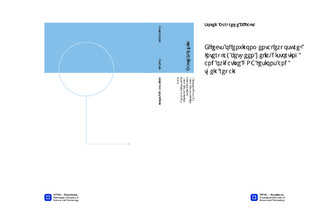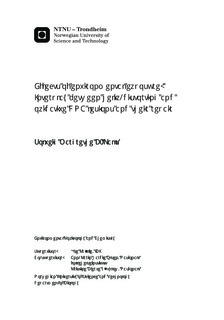| dc.description.abstract | DNA lesions are introduced in all living organisms every day, both via endogenous processes and by exposure to an array of DNA damaging agents. DNA lesions require repair for the sustenance of life. Base excision repair (BER) and nucleotide excision repair (NER) are DNA repair pathways involved in removal of oxidative DNA lesions and helix-distorting DNA lesions, respectively. Several studies suggest interactions or crosstalk between these pathways, involving overlapping activities for removal of the same types of DNA lesions but also interference between repair pathways.Non-repaired DNA lesions are regarded as an important risk factor in the pathogenesis of certain conditions and diseases. It is important to gain insight in the interplay between DNA damaging agents, DNA lesions and their DNA repair pathways, since this may be related to the overall sensitivity of cells to combined exposure to endogenous or exogenous agents.In the present study, we aimed at studying combined exposures to environmental genotoxicants at low doses, and potential interactions between DNA repair pathways. The two genotoxicants lead to DNA lesions that are processed via two different DNA repair pathways. We studied the impact of low levels of oxidative stress on the repair of low levels of helix-distorting DNA lesions; and vice versa - the impact of low levels of helix-distorting DNA lesions, on the repair of low levels of oxidative DNA lesions. We induced the different types of lesions in cells of different genetic background, to study whether a lack of repair of oxidative DNA lesions could also affect the repair of helix-distorting lesions. For this purpose, we utilised wild type mouse embryonic fibroblasts (Ogg1+/+ MEFs), and a MEF cell line deficient in the repair protein 8-oxoguanine DNA glycosylase (Ogg1) (Ogg1-/- MEFs). The Ogg1 gene is involved in the removal of certain oxidized DNA lesions via BER. Ogg1+/+ MEFs exposed to a DNA helix-distorting agent did not show perturbed repair of induced oxidative DNA lesions, suggesting that low levels of NER-sensitive DNA damage do not influence BER. Furthermore, the repair of helix-distorting DNA lesions in wild type MEFs (Ogg1+/+) or Ogg1-/- MEFs was not perturbed by a (single) low level exposure to oxidative stress, suggesting that reactive oxygen species (ROS) or BER-sensitive DNA damage do not influence the repair of low levels of helix-distorting DNA lesions. However, Ogg1+/+ MEFs showed more efficient repair of helix-distorting DNA lesions compared to Ogg1-/- MEFs, regardless of the level of oxidative lesions present in the DNA. This finding suggests that the BER-related repair protein Ogg1 may play a role also in the repair of NER-sensitive helix-distorting DNA lesions.In conclusion, low levels of oxidative stress or helix-distorting DNA lesions did not seem to perturb cellular repair of low levels of helix-distorting DNA lesions or oxidized DNA lesions, respectively, in wild type or Ogg1-deficient MEFs. A crosstalk between Ogg1 and repair of helix-distorting DNA lesions was however observed, suggesting an interplay between BER and NER with respect to the repair of NER-sensitive DNA damage. | nb_NO |

